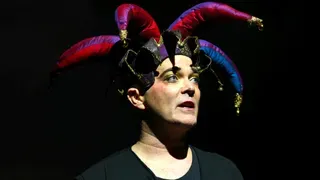December 5, 2010
Argentine Shoes Start Latest Fashion Charity Trend
Robert Doyle READ TIME: 3 MIN.
BUENOS AIRES, Argentina (AP) - In a world where fashion and charity are usually associated with glitzy high-society events, a shoe company has proven that anyone can help save the world - one pair of funky canvas shoes at a time.
"Buy a pair, give a pair" remains the motto of Toms Shoes, which started up four years ago in a little barn outside Buenos Aires, with 12 people stitching together slightly more fashionable versions of the traditional slip-on alpargatas worn by Argentine cowboys for centuries.
The company gave away 10,000 pairs to poor Argentine children that first year, in soup kitchens, schools and Guarani Indian communities.
Helped by a vigorous Internet marketing strategy, Toms Shoes quickly caught on, especially after celebrities like Cameron Diaz and Demi Moore started promoting them. The company now sells six different models in dozens of colors, even wedding versions. The latest is a wedge that makes women appear a few inches taller.
The giving has expanded, too - to 28 countries and counting, with other factories opening in China and Ethiopia to meet the demand.
A few weeks ago, founder Blake Mycoskie's dream came true when the company donated its millionth pair of shoes, to a poor child in Argentina's Misiones province, where Toms has supported Guarani Indian communities.
The milestone is "an opportunity to say thank you to the million people who have bought Toms Shoes," Mycoskie told The Associated Press while visiting Argentina. "We see it as the beginning of what we hope will be something greater - we're helping kids avoid diseases like hookworm in Guatemala, and podoconiosis in Ethiopia - a terribly debilitating disease that's completely preventable with shoes."
Mycoskie, an entrepreneur who tasted fame as a contestant in the "Amazing Race" reality show, discovered the traditional $4 version of the shoe during a polo-playing vacation to Buenos Aires, where he learned of a shoe drive being organized for the city's poor. He quickly saw an opportunity, founding the company with his Argentine polo instructor, Alejo Nitti.
They redesigned the austere alpargatas, adding bright colors and patterns and replacing the traditional jute sole with rubber, and began selling them for $38 each, promising to donate a pair to a poor Argentine child for every pair sold.
This simple idea turned out to be a great fashion equalizer: "It's not very often that a 14-year-old or a 16-year-old can contribute to a charity or a cause. And because our shoes are very moderately priced - 44-45 bucks is the classic - it allows young people to participate," Mycoskie said.
The latest Toms trend is the wedge.
"It's crazy - the wedge has been huge. I've been having women come to me and say 'Blake, I love your shoes but I do not wear flats, i'm not that tall. For the longest time I was like 'I don't know, it doesn't really fit the particular style of Toms.' And then I thought, well, in Latin America, the espadrille wedge is traditional - the shoes that have a rope sole. So I decided, why not?
"It took me about a year and a half to design it, but once I did, it just exploded. It's our number one selling shoe. We can't make them fast enough," he said.
The company's business model builds into the cost of each purchased pair the costs associated with donating a pair - usually the classic black unisex model, since black is the color required for school in many countries.
Toms Shoes now hopes to expand further by working with developing-world entrepreneurs to set up local factories, particularly in countries where barefoot children are vulnerable to tropical diseases.
"We've heard from the Haitian government that shoes are critical now that there is so much debris on the ground. We're actually working with the Clinton Foundation and several other foundations to distribute a lot of shoes there over the next year," Mycoskie said.
Giving shoes away in Ethiopia taught Mycoskie something else - that charity alone isn't sustainable.
"We were making shoes halfway across the world and sending them on a boat, wasting all this energy and money, where we could just make them right in Addis Ababa and put them on a truck right to the people who need them," he realized. "What I learned was, there wasn't very sophisticated production, but with 80 million people living in Ethiopia, they do have the capacity to do this."
Long-term New Yorkers, Mark and Robert have also lived in San Francisco, Boston, Provincetown, D.C., Miami Beach and the south of France. The recipient of fellowships at MacDowell, Yaddo, and Blue Mountain Center, Mark is a PhD in American history and literature, as well as the author of the novels Wolfchild and My Hawaiian Penthouse. Robert is the producer of the documentary We Are All Children of God. Their work has appeared in numerous publications, as well as at : www.mrny.com.





